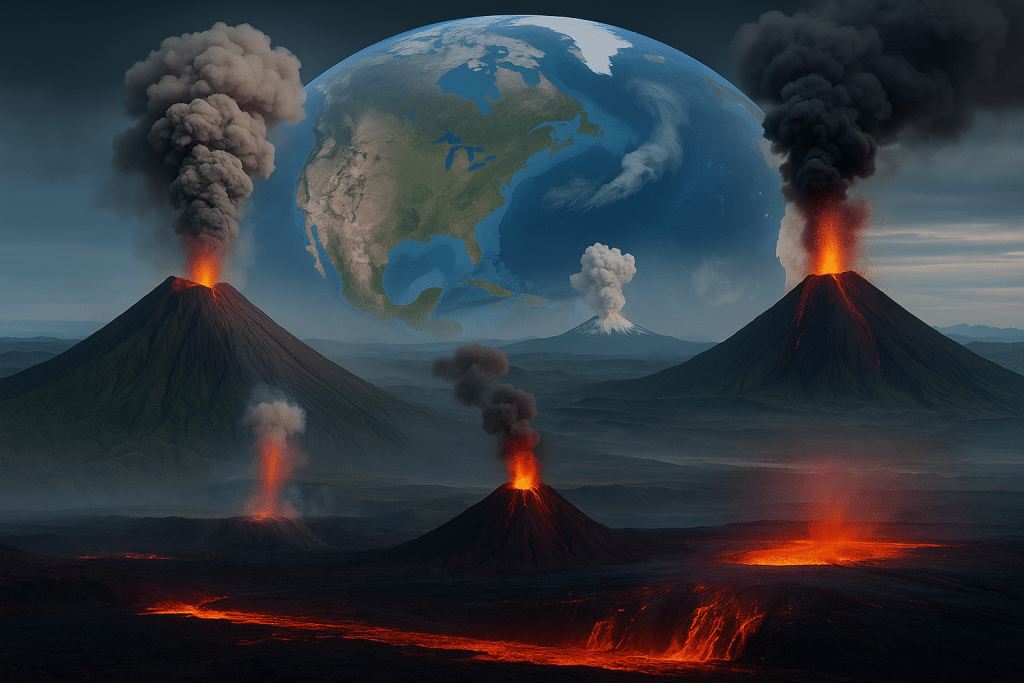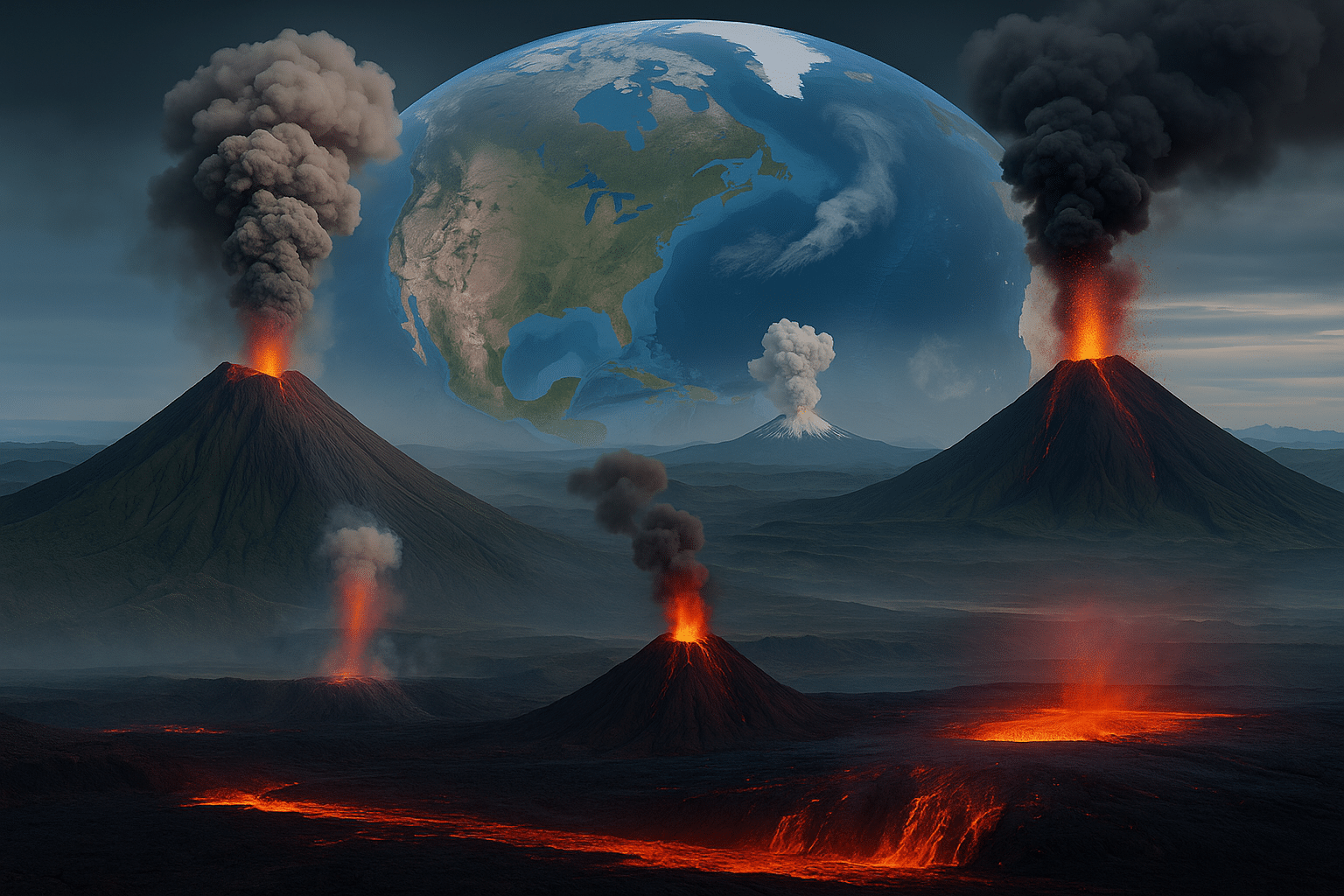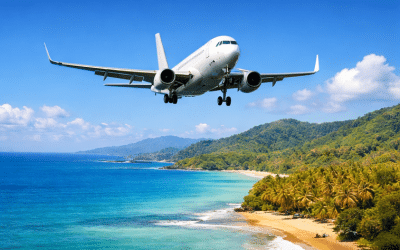🌍 A Planet Built on Fire
Beneath our feet, the Earth never sleeps. From the steaming jungles of Central America to the icy plains of Kamchatka, volcanoes are constantly shifting, groaning, and—when they’ve had enough—exploding in spectacular displays of raw energy. Volcanic eruptions are as old as the planet itself, yet in 2025, the way we understand, track, and experience these forces of nature has evolved.
While the number of global eruptions hasn’t necessarily increased, our awareness has. Satellite feeds beam dramatic lava flows onto our screens in real-time. Volcanologists publish live data across platforms. Instagram, TikTok, and Twitter ignite with every ash plume. And nowhere is this natural theatre more accessible than in Costa Rica.

🌋 Costa Rica: Volcanoes that Breathe, Boom, and Baffle
Costa Rica sits squarely on the Pacific Ring of Fire—a geological pressure cooker where tectonic plates collide and magma surges close to the surface. The country is home to over 200 volcanic structures, five of which are currently active. But don’t think of these as mere mountains. They are living, steaming, rumbling organisms. Some hiss like kettles, others sleep beneath cloud forest blankets, and a few throw tantrums loud enough to wake the capital.
🌋 Arenal Volcano – The Iconic Fire Cone
- Location: La Fortuna, Alajuela
- Height: 1,670 meters (5,479 feet)
- Current Status: Dormant since 2010, but steaming and monitored
- Nickname: “The Sleeping Giant”
Arenal’s near-perfect cone looms over La Fortuna like a geological monument to power and beauty. From 1968 to 2010, it was Costa Rica’s most consistently erupting volcano. In 2025, it’s quiet but still emits steam and occasional subterranean rumbles. The surrounding national park teems with hot springs, rainforest hikes, and canopy tours.
🌋 Poás Volcano – The Acid Lake of Doom
- Location: Central Highlands, Alajuela
- Height: 2,708 meters (8,885 feet)
- Current Status: Active with periodic closures
- Distinct Feature: Crater lake with extreme acidity (pH ~0.5)
Poás holds one of the largest acidic lakes on Earth, glowing turquoise yet deadly. In 2025, it continues short, sudden phreatic eruptions—steam and gas blasts that keep the park on high alert. Visitors wear helmets and stay just 10 minutes at the crater viewpoint. It’s a breathtaking but risky visit.
🌋 Turrialba Volcano – The Ash Giant
- Location: Cartago Province
- Height: 3,340 meters (10,958 feet)
- Current Status: Actively erupting
- Known For: Ash plumes visible from San José
Turrialba frequently blasts ash clouds into the atmosphere. In 2025, its eruptions have caused airport delays and ash warnings. Seismic tremors and sulfur emissions are closely watched. Guided tours are only allowed in low-risk zones due to high volcanic activity.
🌋 Irazú Volcano – The Ghost Above the Clouds
- Location: Near Cartago
- Height: 3,432 meters (11,260 feet)
- Current Status: Dormant but seismically restless
- Unique Feature: Dual-ocean visibility on clear days
Costa Rica’s tallest active volcano features eerie craters and lakes that vanish and reappear. It last erupted in 1994 but still rumbles subtly. From its summit, you can spot both the Caribbean and Pacific when skies are clear.
🌋 Rincón de la Vieja – The Sleeping Witch Awakens
- Location: Guanacaste Province
- Height: 1,916 meters (6,286 feet)
- Current Status: Actively erupting in phases
- Folklore: Named after a legendary witch who cast spells from its peak
With bubbling mud pots, geysers, and volcanic vents, Rincón is a geothermal wonderland. In 2025, phreatic bursts and gas emissions have prompted partial park closures. Its raw, mystical energy draws visitors into the country’s most primal landscapes.
🔥 Eruptions Around the Globe: What’s Blowing in 2025
As of mid-2025, over 45 volcanoes are erupting across the planet. Here’s a global roundup of the most active and visually dramatic.
🌎 Current Major Volcanic Eruptions
Kīlauea – Hawaii, USA
- Activity: Lava fountains, glowing fissures
- Tourism: Viewable via ranger-supervised platforms
Mount Etna – Sicily, Italy
- Style: Strombolian eruptions
- Recent Behavior: Active weekly since February 2025
Fagradalsfjall – Iceland
- Reactivation: Early 2025
- Visuals: Expanding lava fields
Dukono – Halmahera, Indonesia
- Activity: Constant ash plumes and tremors
- Hazard: Disrupting air traffic
Popocatépetl – Mexico
- Nickname: El Popo
- Eruptions: Daily gas and ash emissions
Villarrica – Chile
- Resumed Activity: April 2025
- Status: Lava and seismic swarms
Shiveluch – Kamchatka, Russia
- Explosion Frequency: High
- Impact: Airspace disruptions
Merapi – Java, Indonesia
- Status: High alert
- Threats: Pyroclastic flows
Taal – Philippines
- Current Activity: Gas emissions and tremors
- Risk Level: Orange alert
Fuego – Guatemala
- Behavior: Constant Strombolian activity
- Tourism: Popular night hikes when safe
🛍️ How to Safely Experience Active Volcanoes
Curious but cautious? You can experience volcanic activity up close—safely:
- Costa Rica: Guided hikes to Poás and Rincón de la Vieja
- Iceland: Eruption tours on Reykjanes Peninsula
- Hawaii: Observation points near Kīlauea
Always check government alerts. Ash selfies are not worth the risk.
🧠 FAQs
1. Are volcanoes more active in 2025?
No, but monitoring technology and media exposure make them seem more frequent.
2. Can I visit active volcanoes in Costa Rica?
Yes, but follow park rules and local alerts.
3. Which volcano is most dangerous right now?
Merapi and Shiveluch due to explosive potential and nearby populations.
4. What should I bring to a volcano?
Boots, water, mask, sunscreen, and a good guide.
5. How are eruptions predicted?
Using seismic, thermal, gas, and satellite data.6. Is it safe to live near a volcano?
Depends on the volcano and monitoring system.






